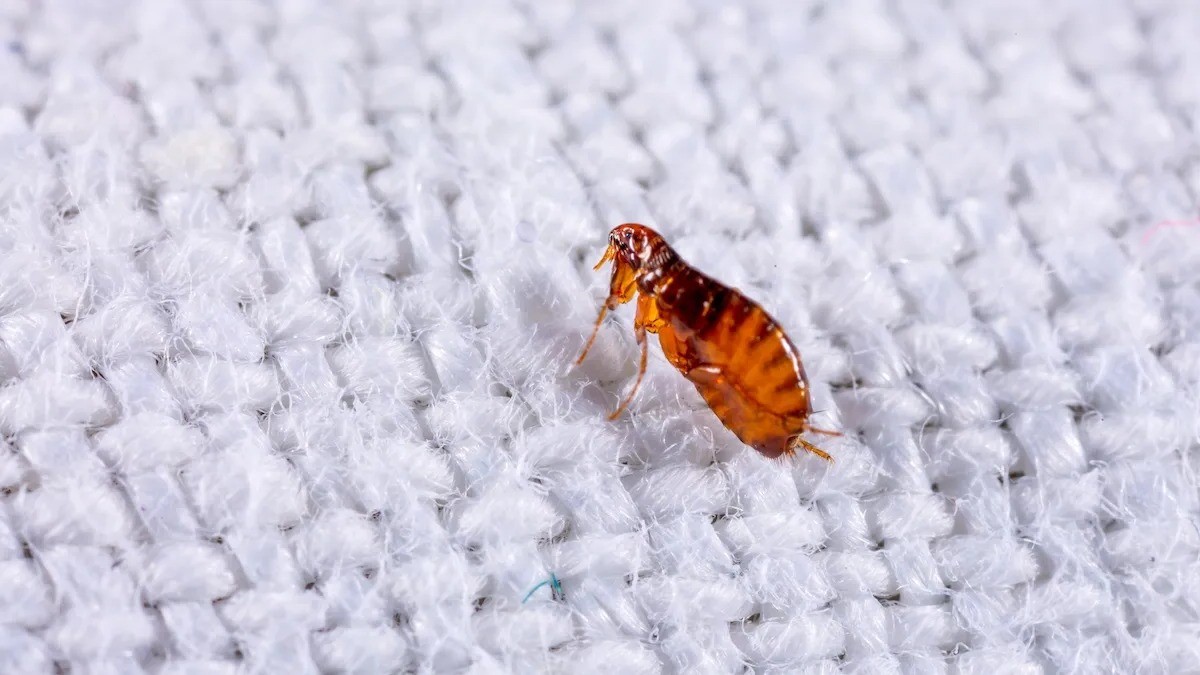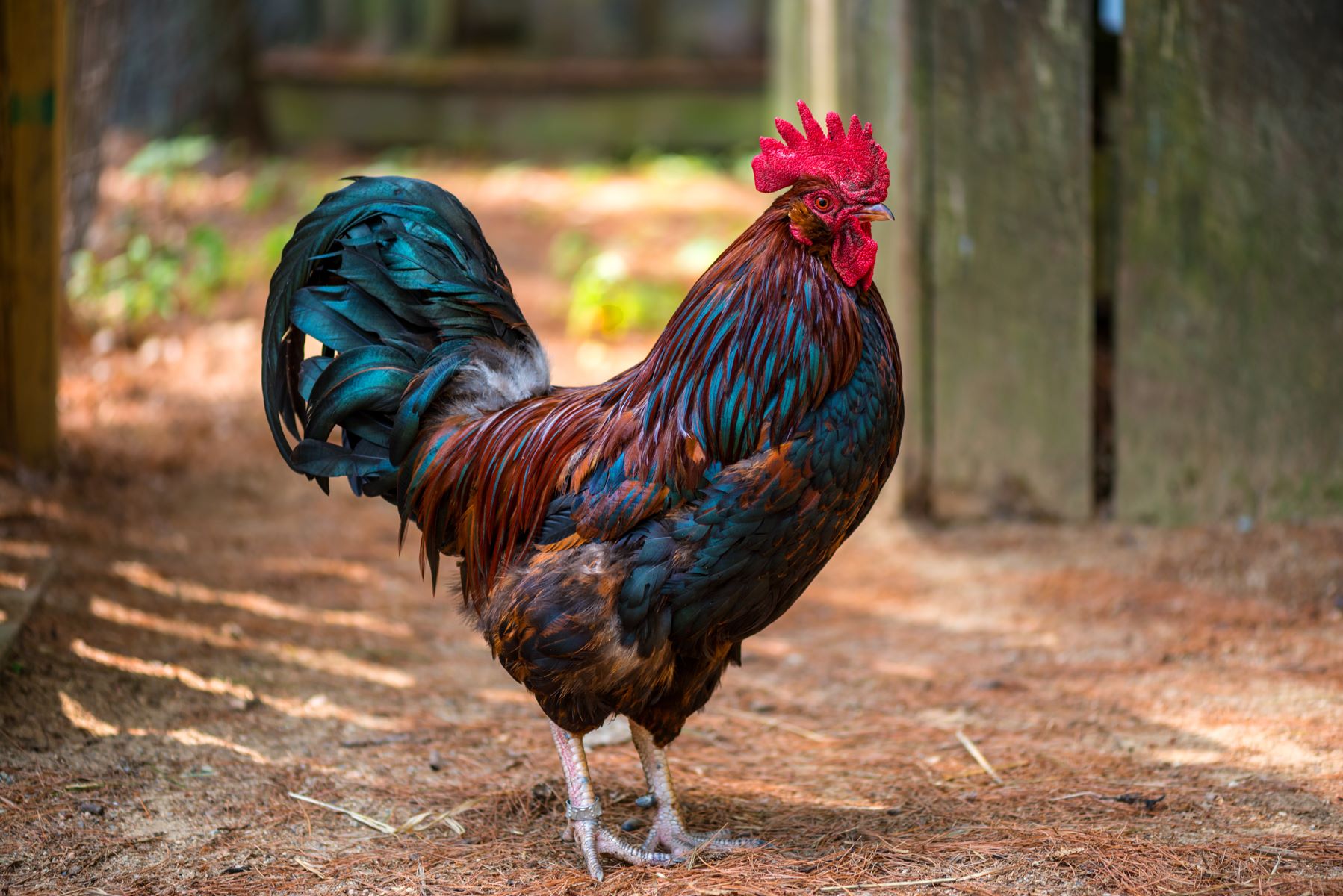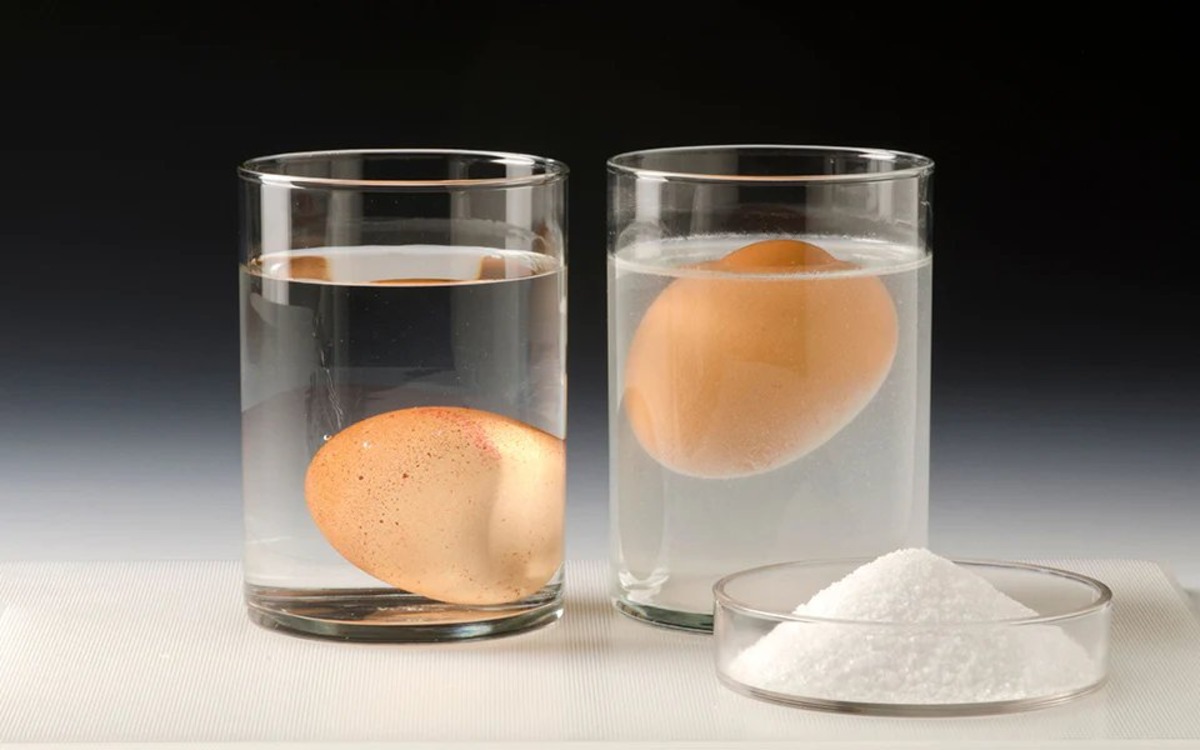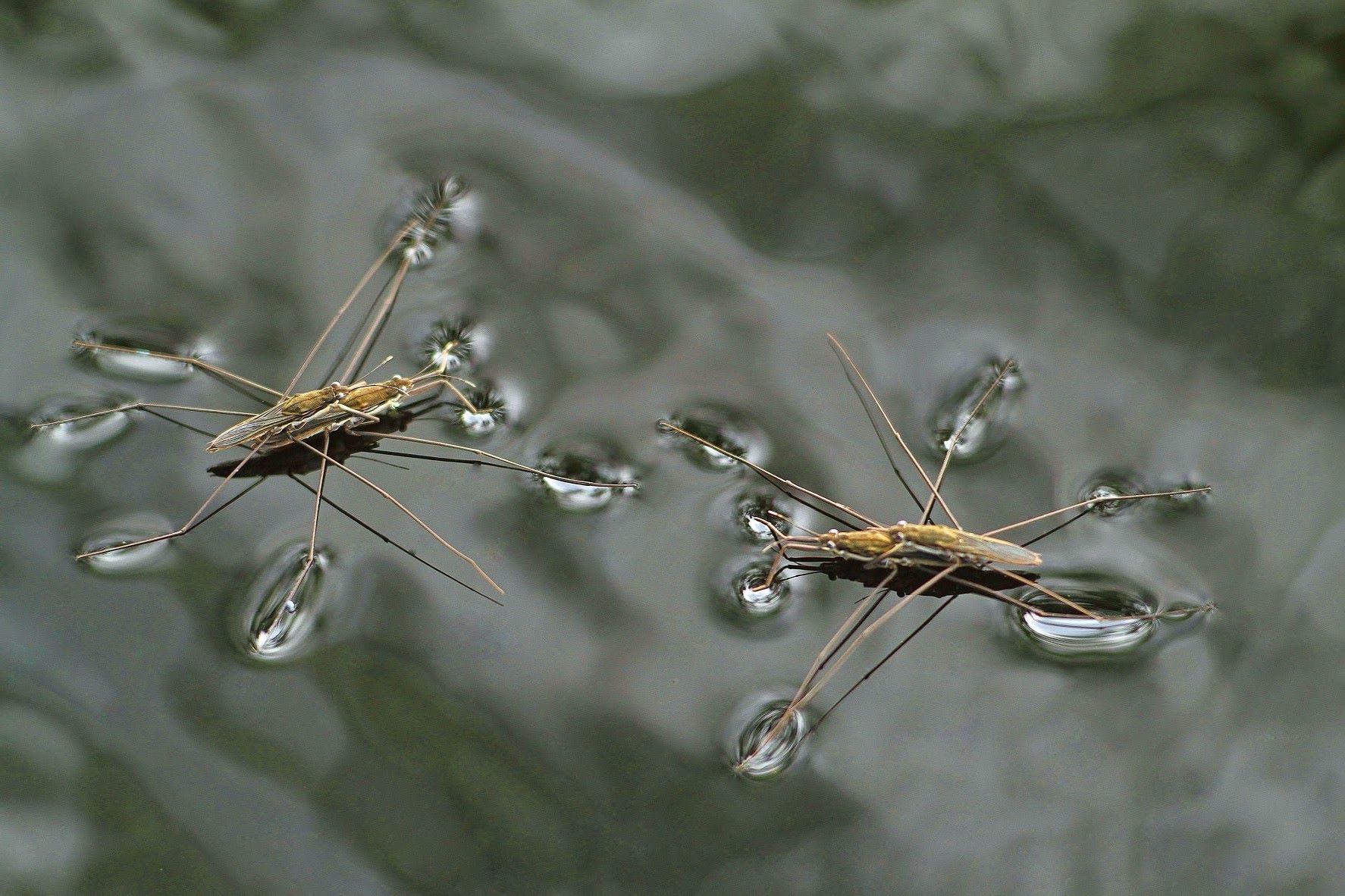Home>Home and Garden>Unveiling The Secrets Of Bed Bug Eggs: A Step-by-Step Identification Process


Home and Garden
Unveiling The Secrets Of Bed Bug Eggs: A Step-by-Step Identification Process
Published: February 20, 2024
Discover the step-by-step process for identifying bed bug eggs in your home and garden. Uncover the secrets to effectively dealing with this common pest.
(Many of the links in this article redirect to a specific reviewed product. Your purchase of these products through affiliate links helps to generate commission for Noodls.com, at no extra cost. Learn more)
Table of Contents
Introduction
Welcome to the comprehensive guide on uncovering the enigmatic world of bed bug eggs. As homeowners, the presence of bed bugs can be a cause for concern, and understanding their reproductive cycle is crucial in effectively managing infestations. Bed bug eggs are a fundamental aspect of their life cycle, and being able to identify and locate them is essential for successful eradication.
In this article, we will delve into the intricate details of bed bug eggs, providing you with a step-by-step process for their identification. By the end of this guide, you will be equipped with the knowledge to distinguish bed bug eggs from those of other insects, effectively locate them, and conduct thorough inspections to mitigate their presence in your home.
Understanding the nuances of bed bug eggs is pivotal in combating infestations and safeguarding your living spaces. So, let's embark on this enlightening journey to unravel the secrets of bed bug eggs and empower ourselves with the knowledge needed to protect our homes.
Understanding Bed Bug Eggs
Bed bug eggs are a pivotal component of the bed bug life cycle, playing a crucial role in their reproductive process. These tiny, oval-shaped eggs are approximately 1mm in length, making them barely visible to the naked eye. Initially, bed bug eggs are translucent, appearing almost colorless. However, as they mature, they take on a slightly opaque and whitish color, making them more discernible.
The female bed bug has the remarkable ability to lay hundreds of eggs throughout her lifetime, typically depositing them in secluded and protected locations. These locations often include crevices, cracks, and other hard-to-reach areas, making the eggs challenging to detect. The resilience of bed bug eggs is noteworthy, as they possess a hardy exterior that shields them from various environmental factors and chemical treatments.
Understanding the incubation period of bed bug eggs is essential in comprehending their impact on infestations. Under optimal conditions, bed bug eggs hatch within 6 to 10 days, giving rise to tiny nymphs that require blood meals to progress through their developmental stages. This rapid hatching process contributes to the rapid proliferation of bed bug populations, underscoring the urgency of addressing infestations promptly.
Moreover, the ability of bed bug eggs to adhere to surfaces using a sticky substance further complicates their detection and eradication. This adhesive property allows the eggs to firmly attach to surfaces, making them resistant to casual removal attempts. As a result, meticulous inspection and targeted treatment strategies are imperative in effectively addressing bed bug eggs and preventing their proliferation.
In essence, comprehending the characteristics and behaviors of bed bug eggs is integral to devising effective control and eradication measures. Their diminutive size, resilient nature, and rapid development underscore the importance of proactive intervention to curtail infestations and safeguard living spaces from these persistent pests.
Step 1: Identifying Bed Bug Eggs
Identifying bed bug eggs is the crucial first step in addressing infestations and preventing their proliferation. Despite their minuscule size, these eggs possess distinct characteristics that set them apart from other debris or insect eggs. To effectively identify bed bug eggs, it is essential to familiarize oneself with their appearance and typical locations within living spaces.
Bed bug eggs are tiny, measuring approximately 1mm in length, and are initially translucent, resembling tiny grains of rice. As they mature, they take on a slightly opaque and whitish color, making them more visible to the naked eye. Their shape is oval, and they are often clustered together, typically in groups of 10 to 50 eggs. These clusters are commonly found in secluded areas such as mattress seams, headboards, baseboards, and other crevices near potential feeding sites.
When identifying bed bug eggs, it is important to distinguish them from other debris or insect eggs that may be present in the environment. Unlike dust or debris, bed bug eggs adhere to surfaces using a sticky substance, making them challenging to dislodge without targeted effort. Additionally, the size and shape of bed bug eggs are distinct, with their tiny, elongated form setting them apart from the rounder or irregular shapes of other insect eggs.
Furthermore, the color and texture of bed bug eggs undergo noticeable changes as they mature, transitioning from translucent to a whitish hue. This transformation aids in their identification, especially when conducting thorough inspections in potential infestation sites. By being attentive to these characteristics and conducting meticulous examinations in common bed bug harborages, individuals can effectively identify bed bug eggs and take proactive measures to address infestations.
In essence, the ability to identify bed bug eggs accurately is pivotal in implementing targeted control and eradication strategies. By recognizing their distinct features and typical locations, individuals can proactively address infestations and prevent the proliferation of these persistent pests within their living spaces.
Step 2: Differentiating Bed Bug Eggs from Other Insect Eggs
Distinguishing bed bug eggs from those of other insects is a critical aspect of effective pest management. Given the prevalence of various insect species and their diverse reproductive behaviors, it is essential to discern the unique characteristics of bed bug eggs to prevent misidentification and ensure targeted intervention.
One of the key distinguishing features of bed bug eggs is their size and shape. Bed bug eggs are tiny, measuring approximately 1mm in length, and are oval-shaped with a slightly elongated form. This characteristic sets them apart from the eggs of many other insects, which often exhibit rounder or irregular shapes. By being attentive to the distinct size and shape of bed bug eggs, individuals can avoid confusion with eggs from other insect species, enabling accurate identification and appropriate action.
Furthermore, the color and texture of bed bug eggs undergo discernible changes as they mature. Initially, bed bug eggs are translucent, resembling tiny grains of rice. However, as they progress towards hatching, they take on a whitish and slightly opaque appearance. This transformation in color and texture serves as a valuable indicator for differentiating bed bug eggs from those of other insects, as it contributes to their unique visual characteristics.
In addition to their physical attributes, the location of bed bug eggs can aid in their differentiation from eggs of other insects. Bed bug eggs are commonly found in clusters, typically ranging from 10 to 50 eggs, and are often situated in secluded areas near potential feeding sites. These locations may include mattress seams, headboards, baseboards, and other crevices within living spaces. By being mindful of these typical egg deposition sites, individuals can effectively discern bed bug eggs from those of other insects, thereby facilitating targeted inspection and intervention efforts.
Moreover, the adhesive properties of bed bug eggs set them apart from many other insect eggs. Bed bug eggs adhere to surfaces using a sticky substance, making them challenging to dislodge without deliberate effort. This adhesive nature distinguishes bed bug eggs from the eggs of other insects, which may not exhibit such strong attachment to surfaces, further aiding in their accurate identification.
In essence, by understanding the unique characteristics and behaviors of bed bug eggs, individuals can effectively differentiate them from eggs of other insect species. This discernment is instrumental in implementing precise pest management strategies, enabling the targeted control and eradication of bed bug infestations within residential and commercial environments.
Step 3: Locating Bed Bug Eggs
Locating bed bug eggs is a pivotal aspect of effective pest management, as it enables individuals to identify potential infestation sites and take proactive measures to address the presence of these persistent pests. Given the elusive nature of bed bug eggs and their tendency to be concealed in secluded areas, thorough inspection and keen observation are essential for successful detection.
One of the primary locations where bed bug eggs are commonly found is in close proximity to potential feeding sites. These sites often include areas where individuals spend prolonged periods, such as beds, couches, and upholstered furniture. Mattress seams, headboards, and box springs are frequent harborage sites for bed bug eggs, as these locations provide the darkness and seclusion necessary for egg deposition and protection. By meticulously inspecting these areas, individuals can increase the likelihood of locating bed bug eggs and initiating targeted intervention.
In addition to bedding and furniture, cracks and crevices within living spaces serve as favored hiding spots for bed bug eggs. Baseboards, electrical outlets, and wall voids are examples of potential egg deposition sites, as they offer shelter and protection for the eggs. The minuscule size of bed bug eggs allows them to be nestled within these narrow spaces, making their detection challenging without thorough scrutiny. By systematically examining these crevices and employing tools such as flashlights and magnifying glasses, individuals can enhance their ability to locate bed bug eggs and address infestations effectively.
Furthermore, luggage and personal belongings can serve as unwitting carriers of bed bug eggs, facilitating their spread to new locations. When traveling or returning from infested areas, it is essential to inspect luggage, clothing, and other items for any signs of bed bug eggs. Paying attention to seams, folds, and pockets can aid in the early detection of eggs, preventing their introduction into uncontaminated environments and mitigating the risk of infestations.
By being attentive to these potential egg deposition sites and conducting meticulous inspections, individuals can enhance their ability to locate bed bug eggs within their living spaces. This proactive approach enables early intervention and targeted treatment, contributing to the effective management of bed bug infestations and the preservation of pest-free environments.
Step 4: Inspecting Bed Bug Eggs
Inspecting bed bug eggs is a meticulous process that requires keen observation and systematic scrutiny of potential infestation sites. Thorough inspections are instrumental in identifying the presence of bed bug eggs and determining the extent of infestations, laying the groundwork for targeted intervention and eradication efforts.
When conducting inspections for bed bug eggs, it is essential to employ a methodical approach, beginning with the examination of common harborage sites. These sites typically include mattress seams, box springs, headboards, and upholstered furniture, where bed bugs and their eggs are known to congregate. By carefully inspecting these areas, individuals can increase the likelihood of detecting clusters of bed bug eggs and initiating appropriate treatment measures.
In addition to bedding and furniture, cracks and crevices within living spaces serve as potential hiding spots for bed bug eggs. Baseboards, electrical outlets, and wall voids are prime locations for egg deposition, as they provide shelter and protection for the eggs. Utilizing tools such as flashlights, magnifying glasses, and crevice attachments for vacuum cleaners can aid in the thorough examination of these narrow spaces, enhancing the chances of locating bed bug eggs and addressing infestations effectively.
Furthermore, the inspection of personal belongings and travel-related items is crucial in preventing the inadvertent spread of bed bug eggs. Luggage, clothing, and other belongings should be carefully scrutinized for any signs of egg deposition, particularly after traveling or visiting potentially infested areas. By paying attention to seams, folds, and pockets, individuals can mitigate the risk of introducing bed bug eggs into uncontaminated environments, thereby preventing the onset of new infestations.
Moreover, enlisting the expertise of pest management professionals for comprehensive inspections can provide valuable insights into the presence and extent of bed bug infestations. Trained professionals possess the knowledge and experience to conduct thorough assessments, utilizing specialized tools and techniques to identify bed bug eggs and formulate tailored treatment strategies.
In essence, the process of inspecting bed bug eggs demands meticulous attention to detail and a comprehensive understanding of potential harborage sites. By systematically examining common infestation areas, utilizing appropriate tools, and exercising vigilance in personal belongings, individuals can enhance their ability to detect bed bug eggs and implement targeted measures to combat infestations effectively.
Conclusion
In conclusion, the journey of unraveling the secrets of bed bug eggs has provided us with invaluable insights into their characteristics, identification, and management. The ability to identify and differentiate bed bug eggs from those of other insects is a fundamental skill that empowers individuals to address infestations proactively and effectively. By understanding the distinct features of bed bug eggs, such as their size, shape, color, and adhesive properties, individuals can conduct thorough inspections and implement targeted intervention strategies to mitigate infestations within their living spaces.
The process of locating and inspecting bed bug eggs demands meticulous attention to detail and a comprehensive understanding of potential harborage sites. By systematically examining common infestation areas, employing appropriate tools, and exercising vigilance in personal belongings, individuals can enhance their ability to detect bed bug eggs and initiate tailored measures to combat infestations effectively. Furthermore, the collaboration with pest management professionals can provide valuable expertise in conducting comprehensive inspections and formulating customized treatment plans, contributing to the successful eradication of bed bug infestations.
The resilience and rapid reproductive capacity of bed bug eggs underscore the urgency of addressing infestations promptly and implementing proactive measures to prevent their proliferation. By being attentive to potential egg deposition sites, such as bedding, furniture, cracks, and crevices, individuals can intercept infestations at early stages, minimizing the impact on their living environments and preserving pest-free spaces.
Ultimately, the knowledge gained from this comprehensive guide equips individuals with the tools and understanding needed to combat bed bug infestations effectively. By honing the skills of identification, differentiation, and inspection, individuals can safeguard their homes from the pervasive presence of bed bug eggs, contributing to a harmonious and pest-free living environment for themselves and their families. This newfound knowledge serves as a powerful asset in the ongoing battle against bed bugs, empowering individuals to take proactive steps in managing infestations and preserving the sanctity of their living spaces.














